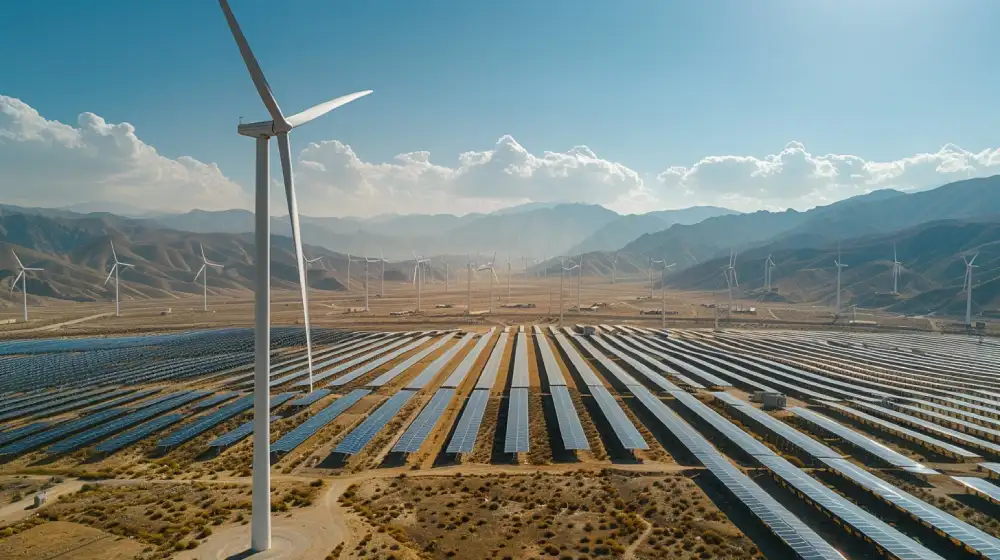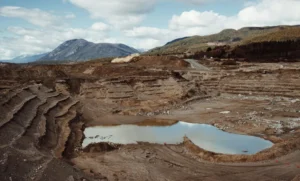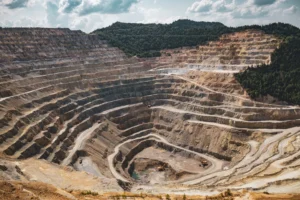Sustainable use practices are essential for maintaining the delicate balance between human needs and environmental preservation.
By carefully managing resources such as water, energy, and land, these practices secure that we can meet today’s demands without risking the ability of future generations to thrive.
They offer a pathway to a more resilient and equitable world, where economic growth and social well-being go hand in hand with environmental management.
Facts on Sustainable Use Practices
Energy Savings
According to the International Energy Agency, improving energy efficiency could reduce global energy consumption by 12% by 2040, leading to big reductions in greenhouse gas emissions and energy costs.
Water Conservation Impact
The World Bank estimates that water conservation practices could reduce water usage by 20-30% in agriculture, which accounts for 70% of global freshwater use, helping to handle water shortage issues.
Economic Growth
A study by the Ellen MacArthur Foundation found that accepting circular economy practices, such as waste reduction and recycling, could generate $4.5 trillion in global economic benefits by 2030.
What are Sustainable Use Practices?

Sustainable use practices are methods of using natural resources in a way that meets current needs without degrading or damaging them for future.
These practices focus on balance, ensuring that resources remain available, ecosystems are preserved, and the environment is protected for long-term use.
Sustainable Use Practices Importance
Sustainable use is essential for preserving our environment. By carefully managing resources, we can meet current needs without risking the well-being of future generations.
This balanced approach protects vital resources such as water, soil, and energy, securing a healthy Earth for all.
Human sustainable resource use is the mindful management of Earth’s resources to ensure their availability for both present and future generations.
It involves balancing the demands of society with the need to protect the environment and promote equity.
Principles of Sustainable Use
- Conservation and resource efficiency: Use resources wisely to reduce waste and protect the environment for future.
- Restoration and rehabilitation: Repair damaged ecosystems to restore their health and function.
- Equity and social justice: Secure fair access to resources and benefits for all people.
- Intergenerational equity: Protect the environment for future.
- Systematic approach: Consider environmental, social, and economic factors in resource management.
Sustainable Use Practices Methods

Energy and Resources
Renewable Energy Sources
Renewable energy sources, such as solar, wind, geothermal and ocean, are sustainable alternatives to fossil fuels. These sources generate electricity without emitting harmful pollutants, reducing our carbon footprint and contributing to energy security.
Solar Energy
- Leverage the sun’s energy to produce electricity and heat
- Flexible applications: residential, commercial, and utility-scale
- Small environmental impact
- Growing efficiency and decreasing costs
Wind Energy
- Converts wind power into electricity through turbines
- Suitable for various locations: onshore and offshore
- Low operational costs
- Contributes to job creation and economic growth
Geothermal Energy
- Using heat from the Earth’s core
- Provides reliable and consistent energy supply
- Environmentally friendly with limited emissions
- Suitable for heating and cooling in addition to electricity generation
Ocean Energy
- Captures energy from waves, tides, and ocean currents
- Potential for large-scale electricity generation
- Still in development but holds big commitment
- Supports marine ecosystem conservation
Energy Efficiency
Energy efficiency means using less energy to perform the same tasks. This can be achieved through better insulation, energy-saving appliances, and smarter energy management for NFTs creation, leading to lower energy costs and reduced environmental impact.
Waste Management and Recycling
Waste management and recycling are main practices in sustainable resource management. By reducing waste and reusing materials, we conserve resources, reduce landfill use, and decrease pollution, leading to a healthier environment.
Water Management

Water conservation
Water conservation involves practices that reduce water usage and prevent wastage. Methods such as drip irrigation, rainwater harvesting, and fixing leaks help assure that water resources are used efficiently and remain available for future generations.
Water Quality Protection
Protecting water quality is important for sustaining life and maintaining healthy aquatic environment.
This involves preventing pollutants from entering water sources, such as rivers, treating wastewater, and promoting practices that keep water clean and safe for all uses.
Integrated Water Resource Management
Integrated water resource management (IWRM) is a coordinated approach to managing water, land, and related resources. It seeks to balance social, economic, and environmental needs, ensuring that water resources are used sustainably and equitably.
Agriculture and Food Systems

Organic Farming
Organic farming avoids synthetic chemicals, focusing on natural processes to grow crops. This practice improves soil health, reduces pollution, and promotes precious biodiversity, making it a more sustainable option compared to conventional farming.
Precision Agriculture
Precision agriculture or e-farming uses advanced technology to monitor and manage crops efficiently. By applying water, fertilizers, and pesticides only where needed, it reduces waste and environmental impact while increasing crop yields.
Sustainable Livestock Management
Sustainable livestock management involves practices that reduce the environmental impact of animal farming.
This includes pasture rotation, reducing greenhouse gas emissions, and ensuring kind treatment of animals, all of which contribute to a more sustainable food system.
Biodiversity Conservation
Biodiversity conservation focuses on protecting the variety of life on Earth, including species, habitats, and ecosystems. This practice is vital for maintaining the balance of nature, supporting ecosystem services, and securing the survival of diverse species.
Sustainable tourism involves traveling in ways that reduce negative impacts on the environment and support local communities.
This includes choosing eco-friendly accommodations, respecting local cultures, and participating in activities that conserve natural resources.
Sustainable Business Practices
Sustainable business practices involve adopting strategies that reduce environmental impact and promote social responsibility.
This can include reducing waste, using renewable energy, and supporting fair trade, leading to a more sustainable and ethical business model.
Sustainable Use Practices Benefits
Environmental Benefits
Sustainable use practices help protect ecosystems, reduce pollution, and combat climate change. By managing resources responsibly, we can preserve natural habitats, protect wildlife, and ensure that our planet remains healthy and resilient for future.
Social Benefits
Sustainable use practices promote social equity by ensuring fair access to resources and improving health outcomes. They also support community development by providing jobs, improving living conditions, and promoting a sense of responsibility towards the environment.
Economic Benefits
Sustainable use practices can lead to long-term economic growth by creating jobs, reducing costs, and increasing resource efficiency. By investing in sustainable practices, businesses and communities can achieve economic stability while protecting the environment.
Challenges and Opportunities
Barriers to sustainable use
Barriers to sustainable use include lack of awareness, financial constraints, and resistance to change. Overcoming these challenges requires education, investment in sustainable technologies, and a shift in societal attitudes towards resource use.
Policy and governance
Effective policies and strong governance are essential for supporting sustainable use practices. Governments play a crucial role in creating regulations, providing rewards, and ensuring that resources are managed in a way that benefits society and the environment.
Role of individuals and communities
Individuals and communities play a vital role in promoting sustainable use practices. By adopting sustainable habits, supporting local initiatives, and supporting for better policies, they can contribute to sustainability and equitable future.
The Bottom Line
Sustainable use practices are essential for protecting our planet and ensuring a prosperous future.
By carefully managing resources, promoting equity, and considering the needs of future generations, we can create a healthier and more sustainable world.
Individuals, businesses, and communities must work together to adopt sustainable practices and build a better future for all.
FAQ's
1. What are sustainable practices?
Sustainable practices are actions that protect the environment, support social well-being, and ensure economic viability for current and future.
2. What are sustainable work practices?
Sustainable work practices involve implementing environmentally friendly and socially responsible operations within a business or organization.
3. Why are sustainable use practices?
Sustainable use practices are crucial for preserving natural resources, protecting biodiversity, and mitigating climate change while ensuring economic growth and social equity.




